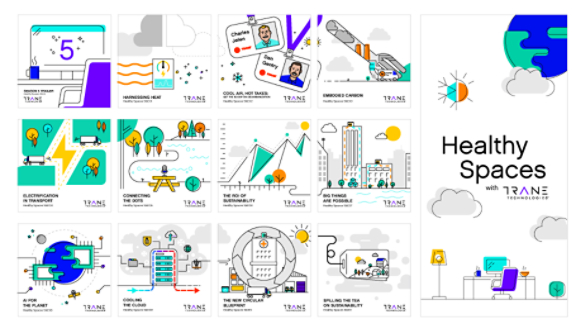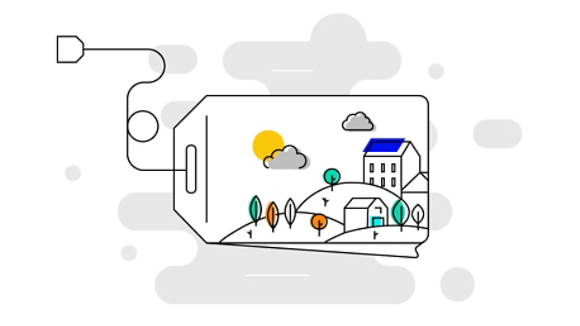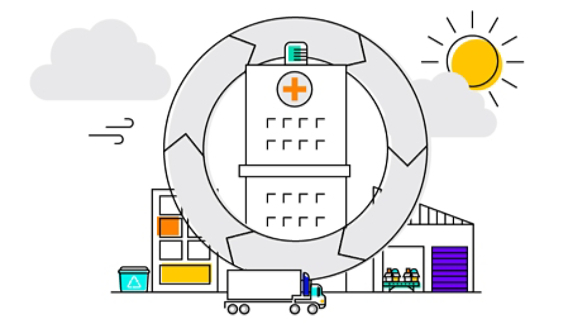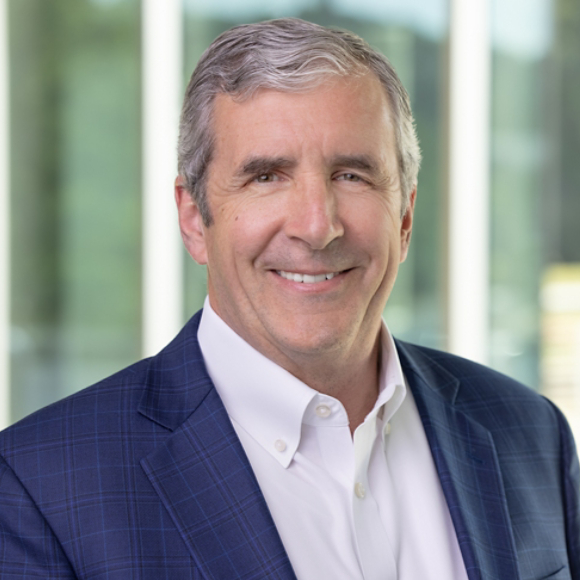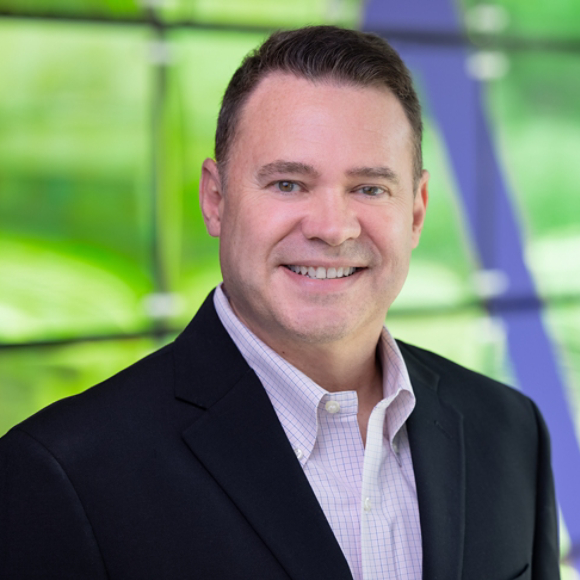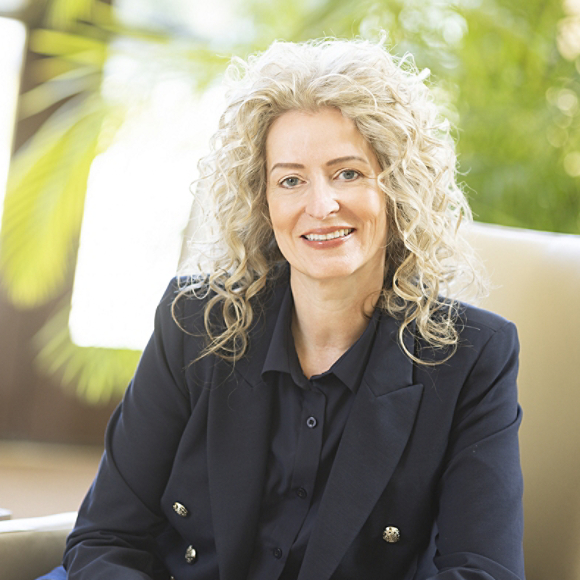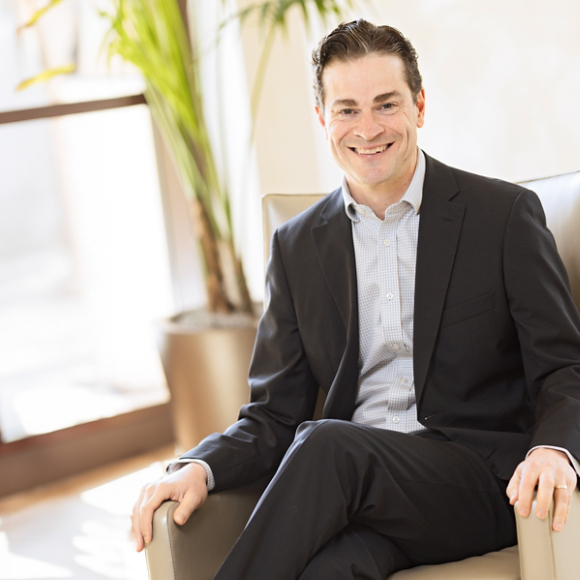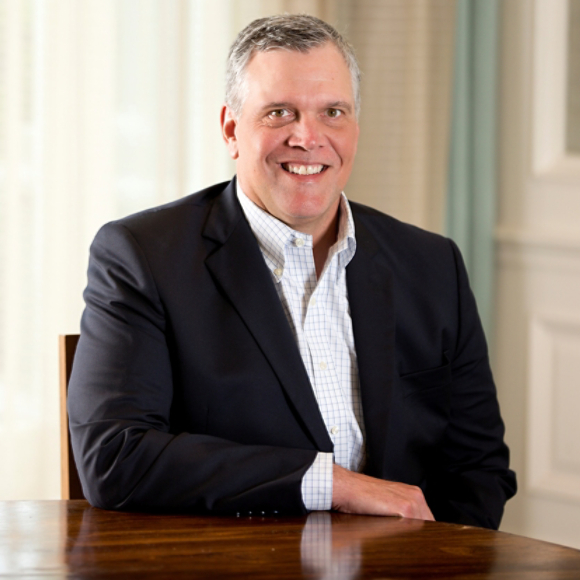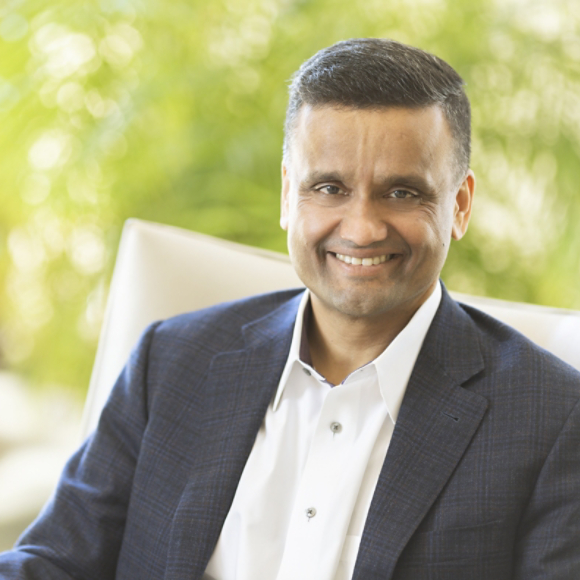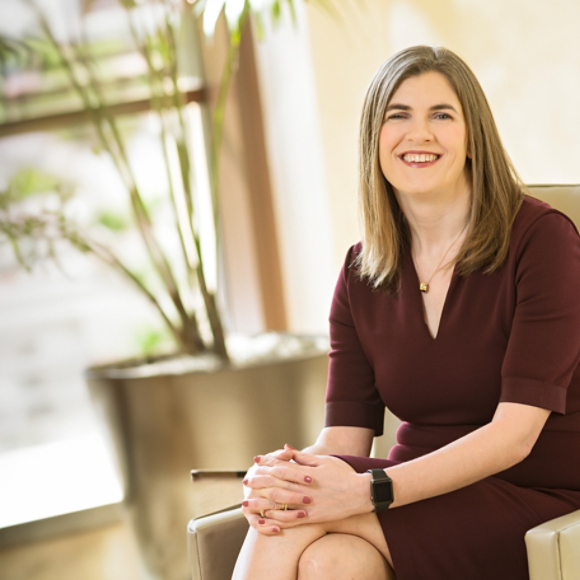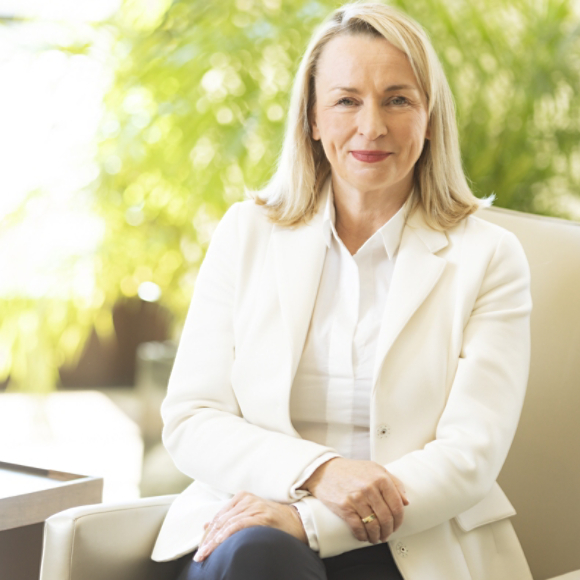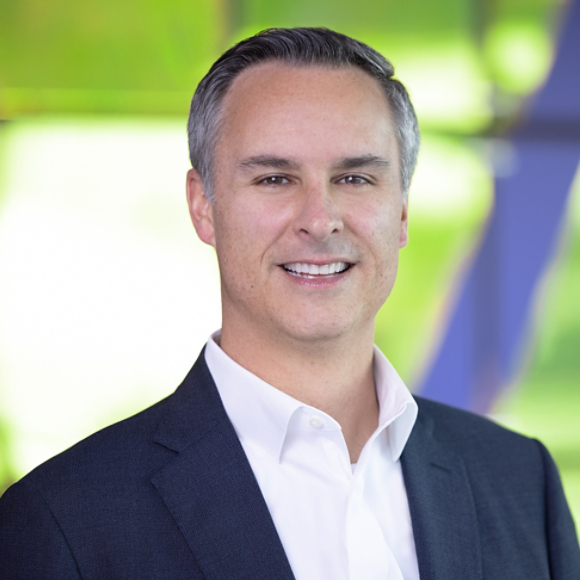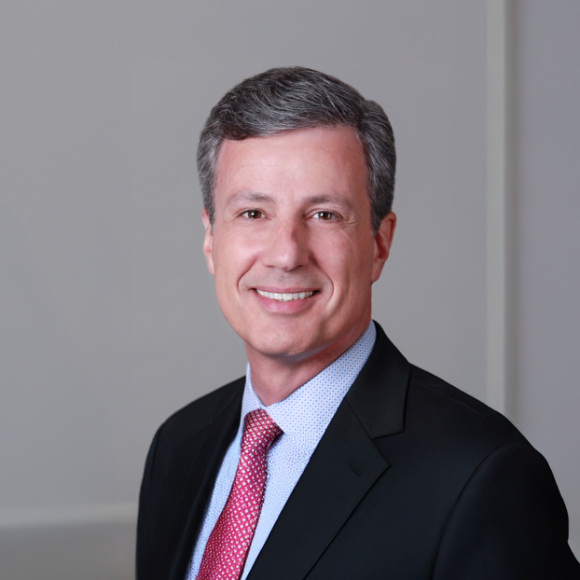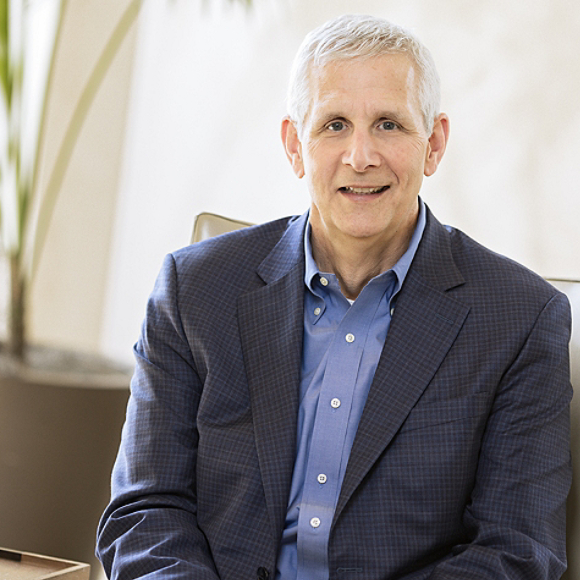July 22, 2025
Embodied Carbon: First Movers of the Built Environment
Season 5 Episode 3: Sustainable innovation for healthier buildings
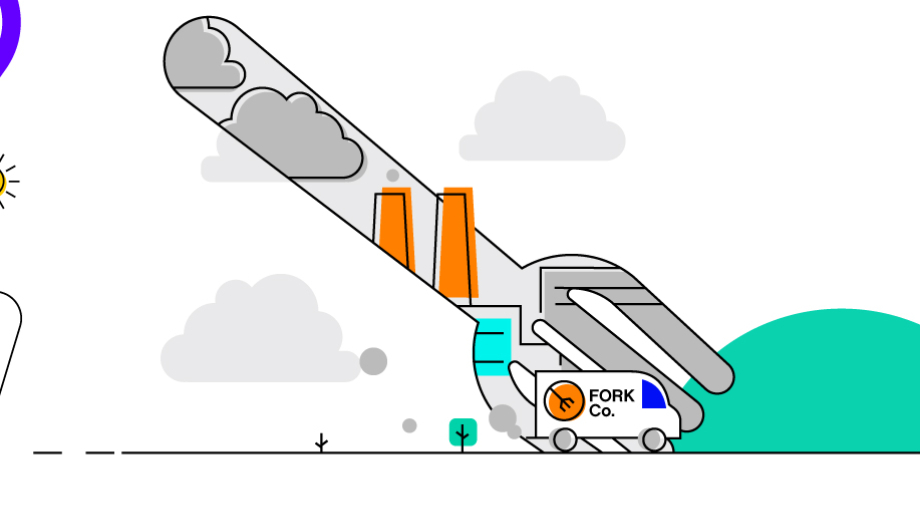
The cause of climate change isn’t a mystery: we’ve been reliant on burning fossil fuels for centuries, contributing to a warming planet. Our carbon emissions are a big problem, but what if carbon could be part of the solution?
How can sustainable innovation reduce emissions?
There are many solutions that can contribute to reducing our emissions footprint, from the transition to renewable energy, to sustainable consumption, production and building practices. And for the first movers in the sustainability space, the opportunities for innovation are endless.
In this episode, we speak to Cal Krause, Operational Impacts Program Manager at Trane Technologies, Nollaig Forrest, Chief Marketing and Corporate Affairs Officer at Amrize, and Molly Swanson, Transportation Management Technology Analyst at Trane Technologies.
We talk about embodied carbon in the built environment—all man-made structures and spaces, including buildings, parks, and infrastructure—strategies for reducing scope 1 and 2 emissions, and the sustainable innovation that could turn buildings into carbon sinks, batteries and more!
Watch Season 5 Episode 3: Embodied Carbon: First Movers of the Built Environment
- Since the Industrial Revolution, we've been relying on burning fossil fuels to make energy. This process releases carbon dioxide into the atmosphere, trapping heat, and leading to global warming and climate change. Our carbon emissions are a big problem, but what if carbon could become part of the solution?
- Once that technology is viable, it actually is going to make cement and concrete a carbon sink at scale. So every one of our homes is gonna be, we're basically creating rock from CO2. So that's, if we can make that happen at scale, that will be really disruptive.
- There are many solutions that can help produce our emissions footprint from the transition to renewable energy, all the way to sustainable consumption, production, and construction practices. And for the first movers in the sustainability space, the opportunities for innovation are endless.
- You are listening to Healthy Spaces, the podcast where experts and disruptors explore how climate, technology and innovation are transforming the spaces where we live, work, play, and learn. I'm Scott Tew, Sustainability Leader at Trane Technologies.
- And I'm Dominique Silva, Marketing Leader here at Trane Technologies. On Season Five of Healthy Spaces, we're bringing you a fresh batch of uplifting stories featuring inspiring people who are overcoming challenges to drive positive change across multiple industries. We'll explore how technology and AI can drive business growth and help the planet breathe a little bit easier.
- Well, hello, Dominique, here we are again.
- Yes, yes we are. And what do you have in store for me today, Scott?
- Well, this episode we're talking about embodied carbon.
- Embodied carbon. Now that rings a bell because we mentioned it in our last episode with the Cool Air, Hot Takes team, when we were talking about, you know, decarbonization as a whole, but we really didn't get into it, so I'm, I'm looking forward to it.
- You're right. Well, let me put it this way. Why is a fork like a building?
- Oh, this feels like a riddle. I have no idea why. Why is a fork like a building?
- It turns out that they've got more in common than you might think. Our first guest today, Cal Krause, is going to make that connection for us. Cal is part of Trane Technologies' Center for Energy Efficiency and Sustainability, where he helps guide the company's sustainability strategy. Cal is also a young innovator. He's recently been named one of Trellis' 30 under 30 rising stars fighting climate change at work. And for Trane Technologies, his work focuses on the operational impacts of sustainability.
- So operational impacts. When you say that, Scott, are you referring to Scope One and Scope Two emissions?
- Yeah, hold on, Dominique, don't get ahead of us now! We're going to get into the different scopes in just a moment. But before we do that, let's start with that elusive term. What is embodied carbon?
- Embodied carbon is all of the emissions that occur throughout a product's lifecycle. So from the time, you know, a product is in the dirt, all the manufacturing, and then, you know, how it gets to the customer, everything but the actual use of a product.
- So it's all but the use. So it's everything that takes to make a product.
- Right.
- And I mean, that sounds easy to do for something like, for something like a single thing, but for something that's big, like a building gets a lot more complicated, I assume.
- Right. So I think you take a simple example, like I have this fork here. So this, this fork, I mean, we use forks every day to eat. Probably don't think a lot about how it's made, let alone all the emissions and environmental impacts with how it's made. But in order for this fork to be here with me, it originally was some kind of combination of iron ore and other alloying elements in the earth. Those were mined, extracted, then transported to a smelter, eventually to a big steel maker using lots of heat and energy to melt it down and, and kind of purify the elements. Then it was, you know, had to be stamped and formed and kind of rolled out of a, a pattern of a big blank of steel. Then actually packaged, right? There's packaging involved in in that, in distributing this to the customer and transported to a customer where it is then used. And then, you know, importantly too, what happens to it at the end of life, right? So, I mean, forks last a long time. I can't think of the last time I've gotten rid of a fork, but, right, is it repurposed for something else? Is it recycled? So all of those things kind of would have environmental impacts and emissions associated with them.
- I love this concept and I love the fork example because it's, it's often, it is the things that you don't think about with a fork, right? We think of forks, we grab them and we eat our meals, but something had to create the fork, right? And there's some type of possibly environmental impact with that creation.
- Right. And, and you know, we don't all just have one fork. So scale that across all the forks needed and, and that's actually becomes more of a significant environmental impact.
- Okay. Cal, well let's go back then to the building issue of a fork is a fork. That's a great example, but a building's a building and it's obviously more complicated, right?
- Right. Yeah. And, and particularly with buildings too, I would say their lifecycle is a little bit more intricate than something like a small fork. So not only do you have huge amounts of things like cement and structural steel and windows and glass all going into the building envelope. There's all the things inside the building that make the building run and operate. So your mechanical systems, your electrical systems, plumbing, but you know, for us most relevantly is like the actual heating and cooling of that building. So the mechanical systems like HVAC systems, chillers, heat pumps, air handlers, whatever it is, heating and cooling the building that has kind of a significant footprint within the building as far as it's normally a pretty big object made out of lots of metals. So the embodied carbon component of that can actually be somewhere between 15 and 50% of total embodied carbon in the building. Especially when you look at things like the repairs and maintenance that happen throughout its lifecycle. Any renovations that happen to the building, those all have embodied carbon impacts.
- Yes. Like additional layers of impact.
- Right.
- Well, Cal, Trane Technologies made a bold commitment last year around reducing embodied carbon. Tell us about the commitment and tell the listeners how we might go about reducing the impact of embodied carbon.
- Yeah, so very exciting. Last year we announced a new commitment to reduce embodied carbon 40% by 2030, and all of our products that are going to the buildings. So that will further help reduce the embodied carbon that we just mentioned for the buildings associated with our products. So really cool. Now we're kind of addressing it from both sides, both the actual, you know, embodied emissions in our products, but also making our products more efficient to reduce the operational emissions of buildings. And it's a, it's a big kind of ambitious goal being that we, we control one component of embodied carbon directly, right? So our manufacturing operations, we have our targets around carbon neutral and reducing our absolute emissions in our manufacturing Scope One and Two. But we also have a huge component which is within our supply chain, all the materials that go into our products, things like steel, copper, aluminum, heat exchangers, electrical components, those all are manufactured and have, you know, just like the fork, many steps of manufacturing that have associated emissions before they get to us. So a key challenge there for us is working with our suppliers to both understand, you know, what they're doing to reduce emissions, how we can support them, but also kind of what, what are the alternatives out there? How can we creatively kind of reduce the embodied carbon in our product? 'cause when we look at the, the big picture, right, the most significant area, the largest source of emissions is in that supply chain upstream before it even gets to our manufacturing.
- I was about to ask, where are the big opportunities? So of all the list of things that you mentioned that go into material of them to making, for instance, an HVAC system, where are the biggest opportunities? Where do you start?
- Yeah, that's a great question. I think it can be difficult to kind of figure out where to start when you think about how many different components and materials go into something like a heat pump. But, for us, that's really why we took this priority approach. And we looked at, you know, what are the largest sources of embodied carbon, the largest emission sources of all the materials we buy? And what we found was, you know, all answers pointed to the metals and, and particularly steel, aluminum, copper, were right there at the top as far as embodied carbon contribution. Another kind of reason to address the, the metals in the product first is because, you know, it's a, it's a simpler product. It's more of a, a commodity, right? There's, it's easier to understand both what the embodied carbon footprint is and how to address it versus something like a, a complex multi-tier assembly, right? That we're trying to unpack at the first stage and, and really understand. So looking at the metals, the metals within all of our components, I think the levers are also really clear for decarbonizing metals, right? So they use large amounts of energy in manufacturing. So either transitioning to renewable energy or applying energy efficient efficiency measures in manufacturing can help reduce that footprint. Also, you know, a lot of 'em use kind of fossil fuels in the, in the primary firing process. So finding a way to transition away from that to some alternative source for reduction, like hydrogen for example, can be a pathway, but also like a, a clear lever that we can influence is how much recycled content is going into that. So every time you're using that secondary metal instead of the virgin or primary metal, you know, there's significant emission savings sometimes like for, in the case of steel, right? Like 80% lower carbon.
- But embodied carbon though, Cal is, is just one piece of a product's total emissions footprint, right? There's another piece. Do you wanna talk about just quickly what the two big pieces are of a product's emissions footprint?
- Yeah, so some products, you know, embodied carbon would encapsulate their entire lifecycle. Something like a fork that I mentioned that doesn't actually ever use energy in its life cycle. I mean, you're applying the energy there when you're picking it up. Something like a, a chiller or a heat pump that requires energy to run and, you know, there's associated emissions with that. And, and we call those like use phase emissions or operational emissions. So that's the second piece. And for us as Trane Technologies, that's actually the largest piece. So think about a, a heat pump that we're gonna put in somebody's house that's gonna then run for 20, 30, 50 years, hopefully, right? Like, hard to stop a Trane, but that is, you know, gonna have a significant environmental impact associated with it. So for us, that's, yeah, the largest impact is that lifecycle of the units and all of the energy and emissions associated with running them. So for a long time now, we've had our, our Gigaton Challenge aimed at reducing those emissions, selling more efficient units and kind of reducing the, the use phase. And, and now we're taking that second step to look at the embodied carbon and all the emissions associated with making it.
- Well. Now just to be clear, does the embodied carbon work that you're talking about, does that help with the Gigaton Challenge or is it part of the Gigaton Challenge? Is it connected at all?
- Yeah, so that's a great question. I think it can be confusing when you say something like, embodied carbon is all of the emissions associated with the product's lifecycle. And then you're like, but not the actual emissions associated with running it, which in our case can be the largest source of emissions. So actually they, they kind of compliment each other rather than the embodied carbon contributing to the, the Gigaton Challenge. So the Gigaton Challenge is really aimed at, you know, selling more efficient, providing more efficient solutions, reducing that big part of the use of our products. Whereas the embodied carbon focuses specifically on all the materials that make it up.
- Given the background of what you mentioned with heavy metals, that to achieve this big commitment, we're gonna have to work differently with some suppliers. So what are, what are the thoughts on that?
- Yeah, so again, kind of taking a priority approach with our suppliers, just like we are with the materials. So we have thousands and thousands of suppliers, it'd be very difficult to effectively engage all of them at once. So instead, looking at the highest impact suppliers are key critical suppliers of those materials and working with them first. And I think the first thing is, you know, not telling them necessarily what to do, but understanding where they are on their journey and seeing what opportunities there are to support them. So do they already have a sustainability strategy? Are they thinking about environmental implications? And, and the good news there is that many of our key suppliers are, and you know, they're kind of different points along their sustainability journey. So that's one, right? Helping support them in their journey. Two is understanding what opportunities there are to collaborate and really having that conversation, making sure we, we kind of convey that sustainability is important to us and we'd like to figure out ways to reduce em, embodied carbon in the products. So, you know, depending on the supplier that could be things like, can we increase recycled content? Is there any opportunity to implement renewable energy for certain components? Is there are opportunities to look at different alloys that have re higher recycled content and therefore lower embodied carbon. Also looking at things like how do we deal with metal scrap? Is there a way to more efficiently and more circular process to, to implement with those suppliers? So all of those ways kind of looking at strategies to work with them. And the last piece is, you know, kind of with the sustainability journey is like understanding what their embodied carbon is at today and, and what it could be at with available technology and kind of working to, to build out glide paths to reduce that.
- It's really about continuous improvement. It's also about aligning, you know, the company with the best suppliers. I mean, there's been a green steel commodity that we've been purchasing as Trane Technologies for quite some time now. Is that helping with embodied carbon reductions?
- Yeah, absolutely. I, I'm happy you mentioned that. So steel was kind of like an early area of momentum for us on embodied Carbon. Before we even had the commitment, we found that lots of steel makers in the US were already thinking about sustainability and had even come up with some different offerings of lower embodied carbon steel. One of those we actually were able to, you know, talk with and and procure that solution. And that, you know, is steel that's made with higher recycled content. It's made in an electric furnace setup rather than traditional blast furnaces which use heavy coal. And they're also looking at ways to address Scope Two emissions from energy with renewable energy. So with that, we're able to reduce a decent amount of emissions and, and help get closer towards our goal.
- So Cal, I can tell that you love thinking about the impact across the entire products lifecycle that you mentioned from sort of beginning raw materials all the way to the end. Where does that passion come from? Where are your interest in this whole area come from?
- I think it's really two main sources of passion. So one is in general, I've just always disliked waste and inefficient processes. So I studied industrial engineering in, in college and that's really focused on process optimization and you know, reducing waste wherever possible. So reducing waste rate, it helps with productivity, but it also, you know, has huge sustainability implications. And I've always been somebody who cared deeply about the environment, loved being outdoors, breathing fresh air, and I want to continue to live in a world like that. I want my future kids to live in a world like that. So kind of both those, those things come together and create like a really strong passion for, you know, making processes more efficient and more sustainable.
- It's inspiring really to hear the passion that the younger generation brings. After all, they will be the sustainability leaders of tomorrow. Now Cal mentioned Scope One and Two emissions, but there are actually three emission scopes. Some of you may not be 100% on the differences between them. So let's just break them down now. Scope One emissions are direct emissions from sources a company controls. So say fuel combustion in boilers or vehicles. Scope Two, these are the emissions that are indirect from the purchase of electricity, steam heating and cooling. And then Scope Three emissions are all the other indirect emissions in the value chain. At Trane Technologies we look at reducing Scope Three emissions in two key ways. First, there are emissions related to the use of our products. This is our biggest area of opportunity and directly linked with something we call the Gigaton Challenge, which is our commitment to reduce 1 billion metric tons of emissions by 2030. The other area where we have an opportunity is Scope Three emissions just related to activities like transport here to talk to us about that is Molly Swanson. Molly's a Transportation Management Technology Analyst in Davidson, North Carolina. And she's just celebrated her fifth anniversary with the company. She's passionate about a recent project focused on transport related Scope Three emissions for ocean shipments.
- Prior to this project, we didn't have a way to directly calculate the ocean emissions that we were emitting. Our, our data mostly relied on external sources from either our transportation partners or vague calculations using metrics like spend or distance traveled. When that only gets you such a granular level of detail 'cause ocean shipments don't move in a straight line, point A, point B. But recently we've been able to obtain precise exact calculations of the emissions that we have been a part of during our ocean shipments. So with that, we're able to start making actual real world decisions about carriers that we use and decisions that we use when planning our shipments. We're kind of just starting to scratch the surface now with how to precisely obtain Scope Three emissions. And I think this project is a great step in that progress to continue taking that data into our own hands. When we have that data in our own hands, we're better able to make better decisions for our specific company and then we're able to see the exact implications of our decisions and see how we're able to reduce our emissions. So I think a big focus on Scope Three is going to be big in the coming years and I'm happy to have a hand in it and I'm happy that we've completed this project to move us closer to it. I'm also looking forward to anything else sustainability-wise I can get my hands on in the future. Thanks.
- Thanks to you Molly. Now our next guest is Nollaig Forrest. She's the Chief Marketing and Corporate Affairs Officer at Amrize and formerly the Chief Sustainability Officer at Holcim. Holcim is the global leader in innovative and sustainable building solutions. The company recently announced their business spinoff named Amrize, now the largest building solutions company, 100% dedicated in North America. Nollaig is an expert on a emissions in the manmade environment. And so she is our perfect person to talk to us about embodied carbon in the construction cycle.
- So ultimately, as you know, the built environment represents 40% of our world's greenhouse gas emissions. One quarter of those emissions happen at the construction phase and that is linked to the core materials that are used in construction, whether it's concrete or cement in our case, but equally steel, glass and so on and so forth. Three quarters of the emissions of the built environment happen during the building's operations linked to heating, cooling, and powering buildings. And that's why we also offer a whole range of advanced roofing and installation systems to make buildings more energy efficient in use. And ultimately what you want to do is you want to take that building stock and give it as long a lifespan as possible. That's why we're really focused on repair and refurbishment so that we can take the current building stock and refit it to make it future proof. So that is just as energy efficient as new build. And another key area for us is circular construction. At the end of use, we are actively deploying technologies to recycle construction demolition materials back into new building solutions that deliver equal performance so that we can close the loop on the entire construction cycle. So I think it's important to understand that the building life cycle really cuts across the embodied carbon at the construction phase, the operational carbon from during the buildings and use. But there's a huge opportunity to extend a carbon footprint of a building by repair refurbishment and ultimately put solutions back into the value chain by recycling and upcycling materials.
- I had a huge knowledge of your involvement at the construction phase via cement and aggregates and things, but I didn't realize that you were also in that operational phase and at the end of life phase, that's news to me, maybe to our listeners as well.
- It was really born out of M and A venture that we've been going on for the last five years. We started by buying Firestone Building products, that's a leader in flat roofing systems for commercial buildings, offering the full range of roof systems from cool roofs, green roofs and solar enabling roofs. And from there we entered residential roofing, we bought Malarkey Shingles, and then we expanded our roofing systems, then Duralast, and then we went into wall systems with ox-engineered products and then we added adhesives and sealants to that because it's part of the whole building envelope. So today our offering from the concrete and the cement that goes in the foundations all the way to the roof, really covers the entire shell of the building.
- You know, in fall of 2024, Trane Technologies, which I would say until recently was a company focused on reducing the emissions of the operating phase of the built environment, specifically in an area that you mentioned, the heating, ventilation and cooling, which is a large energy user of buildings once they, once they're built. But we made a commitment last fall, fall of 24, around reducing embodied emissions. In fact, our commitment was to reduce by 40% the embodied emissions of our products by 2030. It's a high bar for the built environment. We weren't afraid to set a high bar, we weren't afraid to make a commitment that we felt should be a leading commitment because we wanted it to signal that we were really serious about doing our part in reducing emissions. Gimme your thoughts about companies, and I know you're former CSO at Holcim, and you've been involved with making commitments and having developed plans around how to meet the commitments. But what do, what do you think about the value of these commitments, like these very bold commitments companies make?
- I think they're absolutely essential, Scott. I think that as representatives of the built environment, we have to show our best selves to the world because we know what's possible. To some extent, the technologies to make the building stock carbon neutral and even carbon positive actually exist today. A big part of our challenge is to bring these solutions to market at scale. So to be first movers in our respective categories to lead by example and demonstrate what is possible in the built environment today, I think is, is exceptional. We recently built a whole plant, for instance, in Salt Lake City and we made sure it was the lead platinum built plant that really demonstrated what's possible if you make the built environment work at its best. So I think as companies involved in this sector, I think it's our responsibility to show what's possible and lead the way.
- I'm always interested in how companies are thinking about next generation, whatever they're, they're a part of. For us it's next generation cooling and the way we cool buildings and there are lots of new and exciting ways to do that. I'm sure in your world there's also some next generation thinking too. What's got you excited these days?
- Lots of things. So if you look at the world of Concrete, you may have followed that. We partnered with Alejandro Aravena to launch the elemental incremental construction project. Essentially it is a, a housing concept that enables people to enter the housing market in an affordable way. So they have the essential elements that are connected to the grid and give basic sanitation, electricity to people who live in a house. And as they increase their means, they can add, they can add rooms to the house and they can add floors to the house, but they start with the basic essentials. So it's an affordable housing concept that is designed to be deployed in Latin America and it is built with a biochar technology. So it's a tech, it's basically a concrete that is made with a lot of biomass inside and that is actually acting as a carbon sink. So what that promises is that one day concrete, all of our roads, our bridges or highways, our hospitals, our schools could be built in a concrete that actually is serving as a carbon sink. So I think that's super exciting to think that we're at the early stages of actually making that a reality. But equally, I get really excited about how we can make buildings, give it multiple functionalities to parts of buildings. So for instance, if you take a roof, a roof obviously is the ultimate shield of the building, but if you deploy a roof, whether it's a solar roof, a cool roof or a green roof, you can give it even more functional benefits for the users and for the community. And I am particularly excited about the potential of green roofs, green roofs and green scapes because not only do they actually participate in reducing urban heat, they also participate in cleaning the air because they, they're part of purifying the air, capturing knocks and socks, but they also are better for water management. So when you've got severe flooding areas, they can basically play a big role countering the, the overflow and ultimately they can also serve as recreational spaces for people to gather in, you know, in in beautiful natural environments.
- Yeah, I love your excitement. I I share it as well with the potential of things that are just now moving out into the marketplace. Neither of our companies can do these things on our own. We may can come up with ideas, we may be excited for our own technologies or solutions, but we have to partner. You mentioned a couple of partnerships just now, how, how important really is, is a next generation thinking partner to your work at Amrize?
- For us, it's absolutely essential that we partner across the value chain. If you look at where we are a provider of building solutions, there are seven degrees of separation between us and the end user of our products.
- Seven degrees.
- Yeah. So basically we're going to sell a roofing system to a roofing contractor who's gonna sell to a building contractor who's going to be working for an engineering firm who probably worked as an architecture firm who's getting orders from a real estate developer and all the way to maybe a public authority that has mandated something. So when you think about that, if we want people to be aware of the possibilities that our technologies can unleash, we have to educate the entire value chain so that they understand the potential of our systems and then specify them as high as possible in the value chain.
- Is specifications then your, is that your biggest focus area?
- We engage a lot with public authorities around the regulatory norms and standards for buildings because if they get more ambitious and if they specify again, more strict conditions, we can also get our solutions to get scaled up at a faster pace. I think ultimately what we're saying is that the technologies to get to a net zero building exists today if you want them. To reach the market at scale, we need to have the right building norms and standards and we need to have the specifiers on board to make sure that they are embedded in their designs and their, and their standards.
- Okay. You just mentioned something I have to ask about. You said something that some of our audience may not think is true, which is we can get to a net zero building today. And I wanna ask about your thoughts then on the green premium.
- So the way that we look at it, Scott, is we really try to focus on value. If you look at a lead certified building, it tends to commend a higher value if you're going to lease it right to, to someone. So if you're able to deliver solutions that are lead compliant and that support a lead certification, you're going to be unlocking more value for the end user and therefore for the building owner. So that's, that's one way to look at it. But ultimately what we wanna do is we want to make sure that our solutions are available to the, to the many, and that was actually one of our motivations working with Norman Foster a couple years back, we also did a demo project at the Venice Biennale of Architecture. We, we worked with him to design an essential home. So basically what is the premise of the most essential and basic type of livelihood that could be accessible to everyone, and how do we put our most advanced sustainable solutions inside to make it, you know, the most sustainable possible? And so we put our ECOPact low-carbon concrete, we put our iso-guard insulation boards, we put our ecocycle circular technology, we put all of our range of systems inside and we were able to create an essential home that was for 40 square meters, $16,000. And now we're actually in discussions with governments across Latin America to bring this solution into affordable housing concepts
- For so long, these solutions that we would call premium solutions were really aimed at a premium market, right? And that's not most, that's not most of us. So your, your thought about how do we bring premium to every market to all customers, I think as a novel concept, do you think that that's the key to unlocking sort of a generational shift towards, towards better buildings?
- I think so, and I think when we launched our, our, the world's very first low carbon concrete brand ECOPact, it was about four years ago now. Our vision was to make it our off the shelf mainstream concrete. So we didn't want to actually put a premium on it. So we went out there, we launched it across 20 markets with no premium. It was, this is our concrete, it has 100% performance with 30% lower CO2. And then we've been working since then on ECOPact 2.0, ECOPact, you know, second generation formulations that go even further than 30% lower footprint. And that's where we start entering the premium zone where we say, okay, well we can give you the off the shelf 30% lower footprint, but then we can go even further if you want to invest in that. So I think kind of raising the standards for what's your basic off the shelf product.
- Yeah, you've changed the baseline.
- We changed the baseline, exactly. That's what we did. And it worked.
- That's fantastic.
- Today 40% of our concrete is basically ECOPact.
- That's that's incredible. Yeah, that's a, that's a great, that's a great proof point that things are changing.
- Absolutely. So each market goes at its own pace, but I think what's key across what we discussed, Scott, is to really find the first movers, the like-minded partners in each market and unlock the value chain and just work with the people who, who, who believe in this and who want to make it happen and then try to make it accessible to the many,
- I love your ideas about reality versus dream and it seems like you're doing this great work of combining both and and looking for it in all the right places. So congratulations.
- Yeah, and I think what's important for us too is that we're a business. So part of our vision is to make this a driver of profitable growth. I mean our investors basically, they say that Holcim makes sustainability rhyme with profitability because we are focused on turning this into a viable, profitable margin accretive business model. And that really is underpinning all of this, if we want to make this sustainable, if we want to keep on investing in technology and innovation to keep on going further, we need to make this a profitable value proposition. So Holcim has really embedded this at the core of our growth strategy and Amrize equally, so that it becomes a profitable, viable business case.
- So there's a lot of research and development in the work that Holcim and other companies in the built environment are undertaking. Much of that work or a lot of that work is also centered on startups. What's your view on startups and what's your experience there?
- We work with a lot of startups at Holcim. We actually embrace an open innovation ecosystem where we work with the most advanced academic institutions that are engaged in our areas of science from the MIT to UTH here in Zurich. But equally, we partner and invest in a range of startups that are at the forefront of really disruptive, innovative ideas. And what we do across our operations is we, we find one of our markets who wants to pilot the idea, we bring it into one of our business operations. We basically sort of incubate the, the concept and see can it fly? And then once we figured out if it's a viable technology, then we start scaling it up across our, our, our operations at large. So we love to work with startups because they keep this on our toes, but they're also bringing really exciting ideas to the table. So couple of ideas, for instance, one of the startups Pebble that we are investing in, what they are doing is they're actually with captured CO2, they're basically transforming it into CO3 that actually is going to become a building block of cement and a building block of concrete. So what that means is once that technology is viable, it actually is going to make cement and concrete a carbon sink at scale. So every one of our homes is gonna be, we're basically creating rock from CO2. So that's, if we can make that happen at scale, that would be really disruptive. Another startup Magment, we're working with them at Purdue University, they basically are electrochemically charging concrete so that it can recharge electric vehicles in motion. So you can imagine right now it's being piloted for like forklifts in factories or electric scooters in front of like hotels that, so the concrete is charging the electric battery so that it basically just makes it seamless. You can imagine one day a highway where an electric car would be charged while in motion on the highway lane that has this electromagnetic concrete on it. So I think it's just super exciting to see how they are shaping the future and how we can put our operations and our commercial reach to work to make their, their ideas viable.
- And that's a wrap on Embodied Carbon. Dominique, what did you think?
- Wow, Scott, that episode was packed with great information. I loved it.
- It was.
- This season on Healthy Spaces, we're focusing on sustainability across the whole value chain. And I think our guests have been giving us really great insights from understanding what embodied carbon is to how it fits into the overall emissions footprint of the built environment, as well as how companies can make a difference. And I love the really specific examples you, you brought in today. All three of our guests brought a lot of passion to this conversation and, and you know what Scott, I think that is so important for us to continue to make real good progress in this area.
- Yeah, you're exactly right, Dominique. I mean, apart from education, innovation's critical for the future and some of the next generation materials that Nollaig spoke about, for example, are so exciting to me. I think over the next few years we're gonna see how those projects scale up and I really look forward to seeing how they transform the built environment in the future.
- Yeah, I'm looking forward to that too. And I'd also like to hear what our listeners out there think, you know, how, how are you as, or how is your company addressing and reducing embodied carbon and how is that fitting into your sustainability goals? Leave us a comment, we'd love to know.
- Yeah, and that's it for this time. This has been The Healthy Spaces podcast with me, Scott Tew and my wonderful co-host Dominique Silva. If you want to know more about the topics covered today, you can find the links in the show notes. We'll be back soon with another episode, so be sure to like and subscribe so you don't miss it. Thank you for joining. See you next time.
Featured in this Episode:
Hosts:
-

Marketing Leader EMEA, Trane Technologies
-
Global Head and VP, Sustainability Strategy, Trane Technologies
Guests:
-
Operational Impacts Manager, Trane Technologies
-
Chief Marketing & Corporate Affairs Officer, Amrize
-
Transportation Technology Analyst, Trane Technologies
About Healthy Spaces
Healthy Spaces is a podcast by Trane Technologies where experts and disruptors explore how climate technology and innovation are transforming the spaces where we live, work, learn and play.
This season, hosts Dominique Silva and Scott Tew bring a fresh batch of uplifting stories, featuring inspiring people who are overcoming challenges to drive positive change across multiple industries. We’ll discover how technology and AI can drive business growth, and help the planet breathe a little bit easier.
Listen and subscribe to Healthy Spaces on your favorite podcast platforms.
How are you making an impact? What sustainable innovation do you think will change the world?
Topic Tags

 English
English






